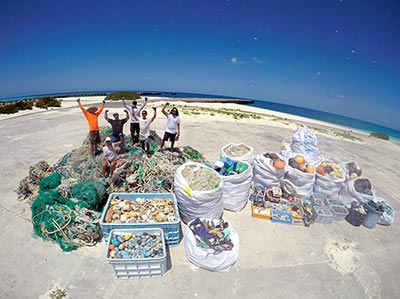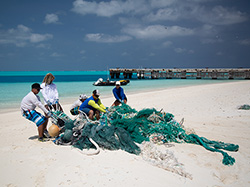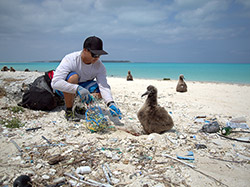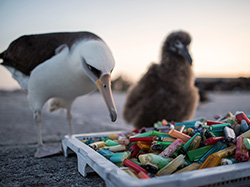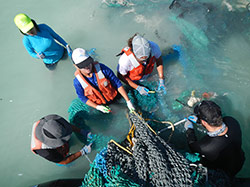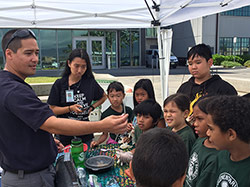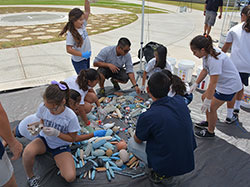Twelve Tons of Marine Debris Removed from Papahānaumokuākea
From April 12 – May 13, 2016, a team of researchers conducted shoreline marine debris surveys and removal at five different islands/atolls in PMNM. This year’s mission was two-part, starting with a 15-day land-based operation at Midway Atoll National Wildlife Refuge, and concluding with a 17-day ship-based operation aboard NOAA Ship Hiʻialakai.
A total of 24,123 lbs. of marine debris, primarily derelict fishing gear and plastics, were removed from the shorelines of Midway Atoll, Kure Atoll, Pearl and Hermes Atoll, Lisianski Island, and French Frigate Shoals. The marine debris brought back to Honolulu this year was sorted, tallied and showcased in an educational outreach event for local elementary school students at the NOAA Inouye Regional Center on Ford Island in Pearl Harbor.
The 12 tons of marine debris includes 1,843 derelict fishing nets or net fragments (weighing 18,755 lbs.), 1,468 plastic beverage bottles, 4,457 bottle caps, 570 shoes and flip-flop sandals, 535 cigarette lighters, 485 toothbrushes and other personal care products, and 8,452 hard plastic fragments.
Marine debris is a human-induced global problem with adverse effects on coral reef ecosystems and marine wildlife, but large-scale removals are only a temporary solution. Through outreach and education, the NOAA Marine Debris team and its partners hope to educate Hawaii's youth on the negative impacts of consuming single-use plastics and inspire them to change their behavior and become the leading example for future generations.
The plastics will be recycled for use in art displays and manufactured goods. All derelict fishing nets will be sent to Hawaii's Nets to Energy Program, a partnership with Covanta Energy and Schnitzer Steel, to be used as fuel to generate electricity, powering homes on Oʻahu.
For more information, see the 2016 NOAA Marine Debris NWHI Interactive Storymap and Blog.
